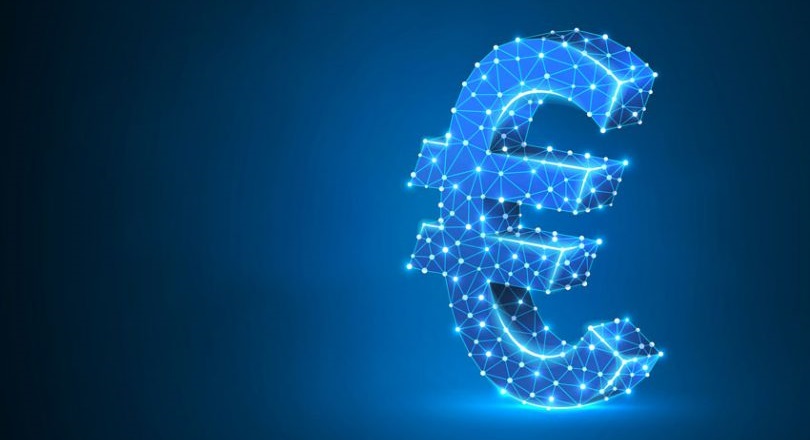
Eesti Pank, the central bank of Estonia, has tested a blockchain-powered technical solution for the use of a digital euro central bank digital currency (CBDC) that it says is capable of handling more than 300,000 simultaneous payments a second and enables payees to receive a payment in less than two seconds.
Eesti Pank, together with the European Central Bank and seven central banks of the euro area, conducted a research project on the technical possibilities of digital euro.
„It turned out that a new technology based on the blockchain would theoretically allow an almost unlimited number of payments to be processed simultaneously with a very large money supply and with a smaller carbon footprint than card systems,” according to a press release.
In addition, a blockchain-based solution would strike a good balance between privacy and anti-money laundering requirements.
Eesti Pank, together with the European Central Bank and the central banks of Spain, Germany, Italy, Greece, Ireland, Latvia and the Netherlands, conducted an experiment to evaluate one possible technological solution for digieuro. In the course of the experiment, the possibilities of ensuring the performance of the digital euro technical solution built on the block chain technology on which the Estonian e-government is based (number of payments and money owners, energy consumption), digital identity and privacy were investigated.
The Governing Council of the European Central Bank has not yet taken a decision on the introduction of the digital euro, but decided on 14 July to move forward with the necessary preparations for the introduction of the digital euro. The Council will decide in the future whether or not the digital euro will come and on what technological solution it will be based.
If the digital euro comes, it would not replace cash, but would be an equivalent additional opportunity for all citizens and businesses in addition to cash. As in the case of cash, the value of the digieuro would be guaranteed by the central bank. The introduction of Digieuro would contribute to the digitalisation of the economy and could lead to programmable money and cheaper payments.
Digieuro would be available as a means of payment in all euro area countries and would also provide security comparable to cash. Digieuro, for example, would allow banks to build new payment solutions that can be used for both regular and online shopping and people-to-people payments.
In the course of the experiment conducted with the participation of Eesti Pank, persons with digital identities from Estonia, Latvia, Lithuania and Spain made mutual payments with digital money. In conclusion, the experiment showed what are the possibilities of blockchain technology and where are the technological limits in building a digital money system.
In summary, the results of the technological experiment were as follows:
The experiment refuted previous problems with blockchain technology, such as low performance and high energy consumption.
The experiment showed that the new digital euro technology based on blockchain technology is well scalable, ie the number of digital payments can be easily increased if necessary. Such technology essentially sets no limits on the size of the money supply. The system is able to cover all euro money in circulation and more; there are no restrictions on the number of cash holders or the number of simultaneous payments.
In the digieuro system built during the test, more than 300,000 payments per second moved at once and the money reached the recipient in less than two seconds. At the same time, the estimated carbon footprint of the new system was smaller than that of today’s card payment systems.
Electronic identity (eID) can be linked to the digital euro in a way that ensures security on the one hand and allows different levels of privacy on the other. The various parties only partially see the payment information, but at the same time it is possible to carry out the necessary checks to prevent money laundering.
The experiment will be the input for the next phase of research into the introduction of digieuro, which began in mid-July. At this stage, various user surveys will be carried out and banks and other payment service providers will be involved in order to further explore the possibilities for digital euro issuance. This phase should also provide an answer to what the future technical infrastructure for the digieuro might be and how the digieuro could best support the construction of future innovative payment solutions in the euro area.
Eesti Pank participates in this project by testing solutions, setting strategic directions and goals for digieuro and making decisions related to digieuro requirements through various working groups. This phase of the investigation is expected to last two years.
Eesti Pank conducted the experiment within the framework of the central bank’s digital money research project launched in October last year.
The report of the experiment is available on the website of Eesti Pank
________________
Background information
On 14 July the European Central Bank published the summary results of the technological experiments.
Programmable money is digital money that can be programmed by a money holder to make contingent payments for a pre-defined purpose. For example, the digital euro would allow the government to support the economy in a completely new way in a pandemic situation: to provide citizens or incoming tourists with a digital euro that can only be used to consume services in the tourism or accommodation sector.
Banking 4.0 – „how was the experience for you”
„To be honest I think that Sinaia, your conference, is much better then Davos.”
Many more interesting quotes in the video below: